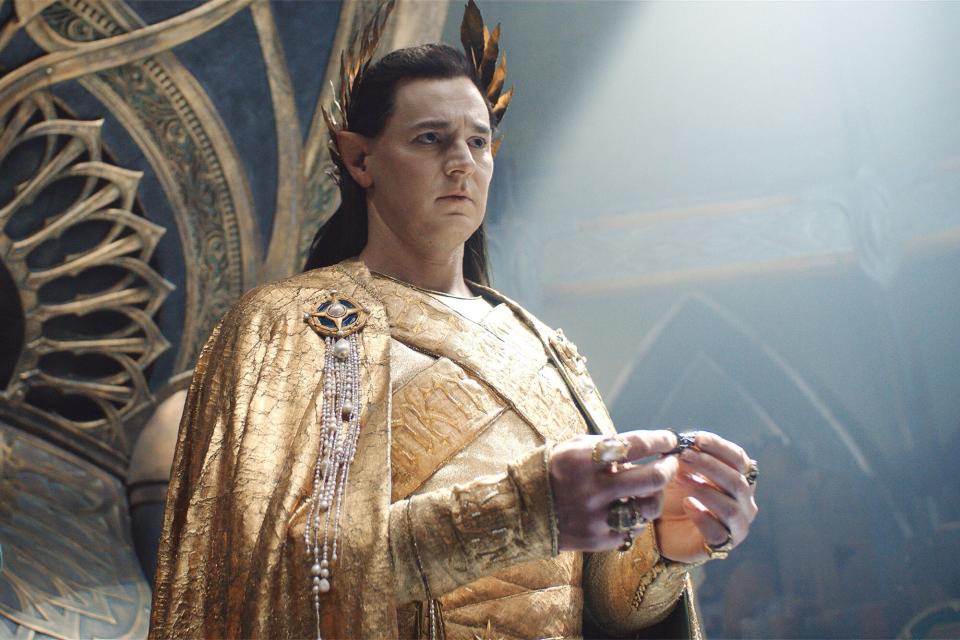What's the deal with the elven rings in The Rings of Power ?
- Oops!Something went wrong.Please try again later.
- Oops!Something went wrong.Please try again later.
Warning: This article contains spoilers for the season finale of The Lord of the Rings: The Rings of Power.
It took most of season 1 for The Lord of the Rings: The Rings of Power to finally get to the magical artifacts mentioned in its title, but in this week's season finale, the elven blacksmith Celebrimbor (Charles Edwards) at last fired up his forge and got to work.
Despite the plurality in the title, The Lord of the Rings is often understood as the story of the One Ring, which the Dark Lord Sauron created as a means of dominating all other life. As any loyal reader of J.R.R. Tolkien knows, other rings were created as well — three for elves, seven for dwarves, and nine for men, as the song goes — but Peter Jackson's film adaptations mostly just focused on the One. It makes sense as a creative choice; although this may be difficult to remember in retrospect, there was a time when Lord of the Rings was seen as impossible to adapt. Keeping the audience's attention on only one ring was a big factor in making this famously complicated fantasy saga accessible to a mainstream audience.

Prime Video The elven king Gil-galad (Benjamin Walker) in 'The Lord of the Rings: The Rings of Power.'
But in Tolkien's books, he talks much more about the others — particularly the three elven rings, which are the ones created in The Rings of Power season finale. Each of them is identified with a particular metal and a particular element of nature, and each also has its own name, because the elves don't love anything as much as they love naming things. They are: Narya, the ruby-encrusted Ring of Fire; Nenya, the adamant Ring of Water; and Nilya, the sapphire-emblazoned Ring of Air. Now, don't let the mention of elements go to your head if you're an Avatar: The Last Airbender fan; wielding Nilya doesn't allow Elrond to manipulate wind as a weapon.
The three elven rings are powerful, just in a less obvious way — albeit one very much in keeping with Tolkien's themes. Even in The Silmarillion, which is about the creation of Middle-earth, Tolkien writes about the "weariness" of the mortal world and the inevitability of decay over time. The elves are at the center of that mythic saga, and the only reason they're still around in The Lord of the Rings (which takes place millennia later) is because of the three rings. While Sauron's One Ring is built around domination, the elven rings are built around preservation. As Elrond says at the council in Rivendell, "those who made them did not desire strength or domination or hoarded wealth, but understanding, making, and healing, to preserve all things unstained. These things the Elves of Middle-earth have in some measure gained, though with sorrow."
This, indeed, is why the rings are forged in The Rings of Power: Gil-galad (Benjamin Walker) has foreseen that the elves are fading, and only a magical solution will keep his people alive. Gil-galad will be the first bearer of Nilya, but it will eventually pass to his protégé Elrond (Robert Aramayo), just as Narya will initially go to Cirdan the Shipwright before ending up in the hands of Gandalf (who does indeed have an elemental affinity for fire, as The Rings of Power has repeatedly demonstrated with its version of the character). Nenya is for Galadriel, and will make her future kingdom of Lothlorien almost a preserve for the elven glory of the Elder Days, even into the latter years of the Third Age of Middle-earth.
But there's an important difference between the show and Tolkien's books when it comes to the forging of the rings. In the show, these are the first rings of power to be forged in Middle-earth, and though they required Sauron's help to make, Galadriel (Morfydd Clark) detects Sauron's hand in the process and successfully pressures him to leave the elven kingdom before the seven dwarven rings or the nine human rings can be forged. But in Tolkien's text, the three elven rings were among the last rings to be forged, after Celebrimbor had already grown suspicious of Sauron and decided to work without him.
One thing we can be sure of: The three rings are key to resisting Sauron's influence and aiding in the quest to destroy his One Ring.
For more on The Lord of the Rings: The Rings of Power, listen to EW's new podcast All Rings Considered, featuring in-depth episode breakdowns and exclusive interviews.
Related content:

